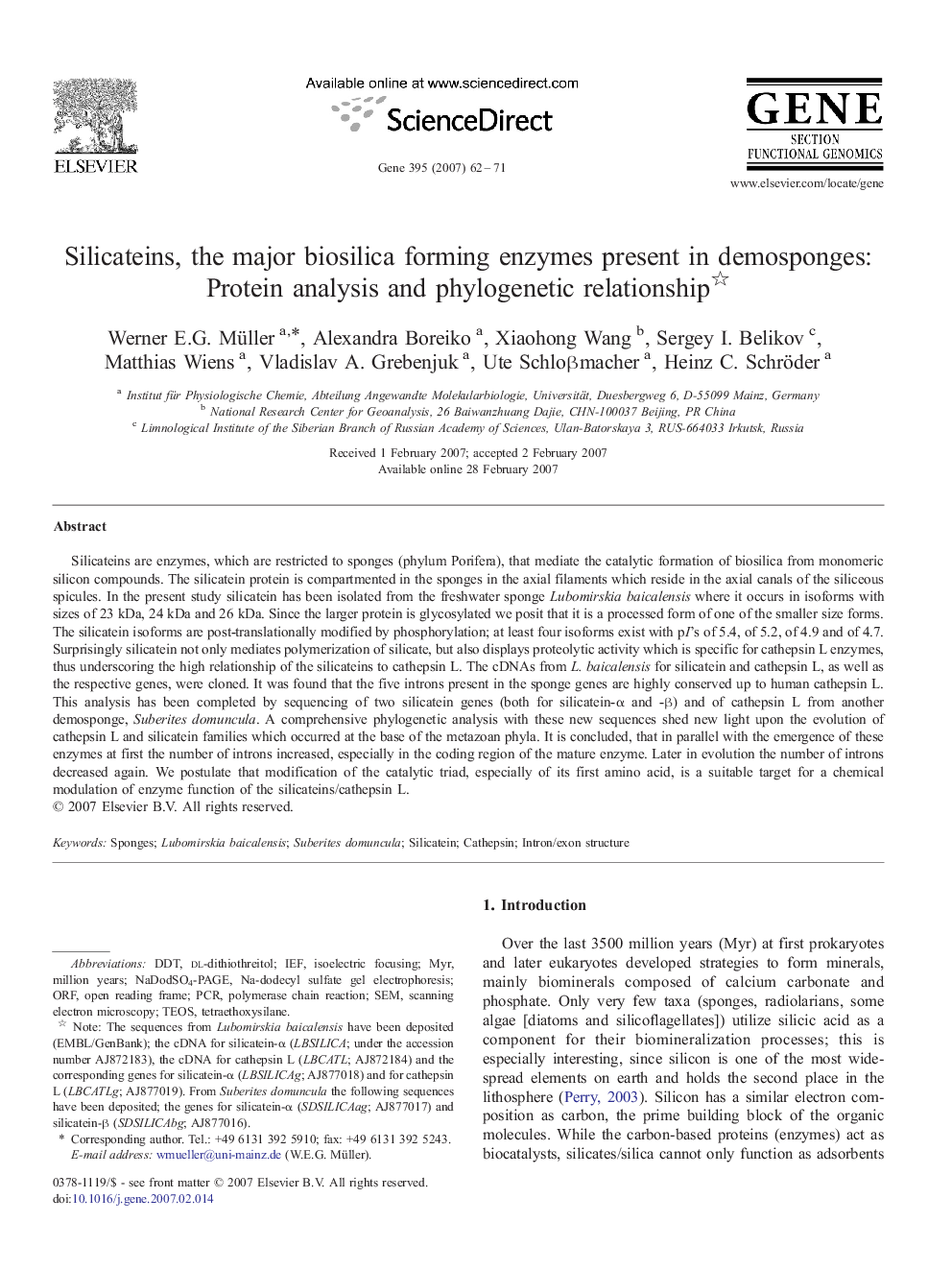| کد مقاله | کد نشریه | سال انتشار | مقاله انگلیسی | نسخه تمام متن |
|---|---|---|---|---|
| 2819671 | 1569933 | 2007 | 10 صفحه PDF | دانلود رایگان |

Silicateins are enzymes, which are restricted to sponges (phylum Porifera), that mediate the catalytic formation of biosilica from monomeric silicon compounds. The silicatein protein is compartmented in the sponges in the axial filaments which reside in the axial canals of the siliceous spicules. In the present study silicatein has been isolated from the freshwater sponge Lubomirskia baicalensis where it occurs in isoforms with sizes of 23 kDa, 24 kDa and 26 kDa. Since the larger protein is glycosylated we posit that it is a processed form of one of the smaller size forms. The silicatein isoforms are post-translationally modified by phosphorylation; at least four isoforms exist with pI's of 5.4, of 5.2, of 4.9 and of 4.7. Surprisingly silicatein not only mediates polymerization of silicate, but also displays proteolytic activity which is specific for cathepsin L enzymes, thus underscoring the high relationship of the silicateins to cathepsin L. The cDNAs from L. baicalensis for silicatein and cathepsin L, as well as the respective genes, were cloned. It was found that the five introns present in the sponge genes are highly conserved up to human cathepsin L. This analysis has been completed by sequencing of two silicatein genes (both for silicatein-α and -β) and of cathepsin L from another demosponge, Suberites domuncula. A comprehensive phylogenetic analysis with these new sequences shed new light upon the evolution of cathepsin L and silicatein families which occurred at the base of the metazoan phyla. It is concluded, that in parallel with the emergence of these enzymes at first the number of introns increased, especially in the coding region of the mature enzyme. Later in evolution the number of introns decreased again. We postulate that modification of the catalytic triad, especially of its first amino acid, is a suitable target for a chemical modulation of enzyme function of the silicateins/cathepsin L.
Journal: Gene - Volume 395, Issues 1–2, 15 June 2007, Pages 62–71